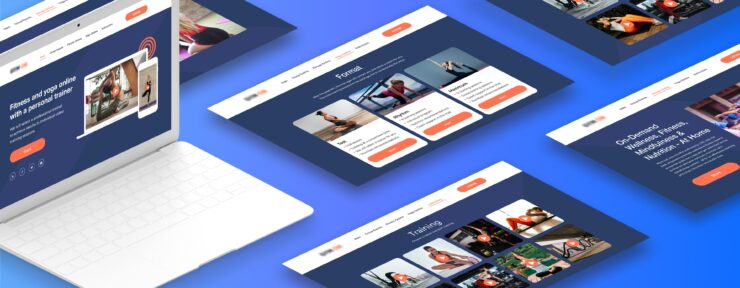Personal training is a fantastic industry. We are enabling fitness coaches to inspire the masses to take better care of themselves and ensure nutrition and health care for others and our remarkable growth.
However, the development of MyPTHub personal training software has made the market more vulnerable, with individuals taking advantage of the opportunity to use shortcuts and deliver subpar services for personal benefit. Leading many astray.
Everybody has heard tales of fitness experts who caved into such urges. Indeed they find it extremely difficult to rebuild their reputation once destroyed. The social memory of the fitness sector is extensive.
To be safe, we require rules that define and help trainers to maintain the ethical integrity of software applications used in the fitness profession.
The Ten Commandments of choosing personal fitness applications are listed below. You can use them as a guide to ensure you have the right tools to grow your business.
The right way
When and Why Should I Use Fitness Training Application Software?

You may be wondering whether every personal trainer requires fitness software.
Perhaps not
Although it primarily relies on your choices, you should consider it if you’re committed to establishing your own business.
You should modernize if you’re committed to becoming a fitness instructor and creating a solid, long-term business. M prosperous fitness experts utilize trainer software to organize and plan information. This helps with progress tracking, template management routine guides, and customer engagement.
Many software packages come with cloud-based web and mobile applications that you and your customers may use to communicate. Customers increasingly demand this, but the value of adopting software applications goes far beyond pleasing customers.
The primary benefit of using software is the improvement and efficiency of your job. You’ll be able to work with more customers and assist more individuals in achieving their objectives faster. However, you must first identify and choose the best application for your program.
What are The 10 Rules of Choosing Personal Training Software?

1. Checklist capabilities. You need software that helps you precisely and effectively prepare for training sessions using a checklist
Imagine the pain of starting and leading a lesson and discovering you skipped or forgot a necessary step. You need to come up with a solution right away to get everything in order and facilitate the session without having a panic attack?
Using applications that support checklist templates will help you make sure you have everything you need before starting the session. You must perform specific activities before and after each session to prepare for physical meetings or online training sessions.
You must perform specific activities before and after each session to prepare for physical meetings or online training sessions. You can make two comprehensive checklists: one for in-person meetings and the other for online training.
You might have to adjust your general list and tailor templates to more complicated sessions and specific users. You may prefer to have co-facilitators watching your chat box when running online training sessions to ensure smooth user engagement.
During serious sessions, you can also toggle the feature that permits members to communicate secretly with one another, turn on the mute feature.
Implement a checklist for all your sessions whenever you’re running a physical session that lasts more than two hours. It’s constructive. You can use your list to evaluate and redesign your program after each session and improve efficiency.
2. Promote learning rather than giving lectures.
You need application software that helps you ensure that your clients learn and understandl everything you teach them. From workouts to nutrition and sleep patterns. You should effortlessly reiterate your message.
You should pick this up early on in the job.
But that doesn’t imply you have to speak exclusively. Application software will give your clients a chance to speak.
You should involve your participants early and frequently throughout your sessions. Provide individual allocations for face-to-face or online meetings with each client. This gives you the capacity to reflect on individual clients and groups.
If you conduct online sessions, you can encourage members to write and interact in the chat box.
You should polish people’s ability to identify the need for learning new skills, draw on insight and experience, and benefit from one another. Which you can promote using group activities.
You can build groups by encouraging your members to form pairs and share knowledge and experiences.
Online meetings provide key features in allowing participants to participate remotely and share knowledge in chat rooms.
3. Learner retention tools.

You need an application that helps you improve student retention by introducing new abilities and resources. You should choose a straightforward application model that allows you to discover and engage your clients effectively.
Application software for fitness will help you persuade your clients to consistently chase their fitness goals and learn new nutrition plans and exercise templates.
You should have the option to discuss or show clients how they should go about their fitness. Consider a series of questions to launch a fruitful conversation and ensure that you are on the same page with your clients. Ensure proper communication, instructions, and learning plans.
Various educational activities, including role-playing, games, and case studies, support the demonstration stage. Furthermore, highlighting the benefits of utilizing the application expertise and the adverse effects of ignoring it may be reviewed after.
4. Research and engagement.
To effectively encourage in-depth conversations, you must employ a range of questions and remarks for your clients.
You will have to penetrate introverted barriers and get room to talk, and, everyone on track. Use overhead questions and hypothetical reflection statements that invite members into starting conversations.
This will help you address individual people or groups with specific needs.
You can also use application software to re-engage people having trouble moving forward. Put together a list of direct questions you can share with your training group and have them respond individually.
You help your customers come up with solutions to their fitness issues by answering hypothetical questions. You can convert and tailor learning activities by coming up with multiple inquiries for a conversation.
You can also leverage invitation phrases to encourage clients to volunteer and contribute their ideas. Giving free opinions. Everyone gets a few open-ended questions to answer.
Include general questions that anybody can answer. This will allow clients to discuss their challenges in detail.
You can use application software to rewrite history. For instance, you can gather more client information and track their daily patterns to help you understand their needs.
5. Educational App gallery.
You must provide media galleries and instructional documentation for clients to access anytime.
You should create a knowledge hub that addresses the what, when, where, how, why technique to provide clear instructions on what your customers should do, the environment they should do it in, and how they should go about each activity.
This will quicken the onboarding process and help clients easily understand your methods.
6. Consistent Feedback

You should conduct client interviews and collect key information regarding their fitness aspiration. Give effective feedback from the data collected.
You can use the situation, task, action, and outcome approach to design your feedback model, including result reviews as an additional method for providing developmental feedback. This will help you highlight proper conduct and the results of the suitable activity, including giving positive comments.
You can highlight the consequences of breaking commitment and the perks of observing it.
7. To develop your skills, you must adopt a skills development approach.
You need an app that helps you identify opportunities, adapt teaching, help clients understand the activities, promote consistent practice, record progress, and review results. The other prominent models include goal orientation, reality check, key obstacles, and willpower. You can use these approaches to design your training and fitness mentorship program.
For instance, listen in on discussions or skill-practice sessions in smaller groups and with other trainers. Discuss your observations from the individual fitness spectrum. You’ll need to deeply understand where folks seem to be struggling, describe how you plan to lessen or end that issue, then clarify or illustrate what must occur.
Use your application to segment clients and form smaller exercise groups to encourage team exercise for common goals. Last but not least, circle back to examine individual groups and how they are progressing with activities.
8. You must establish a controlled workout environment
Your application should enable you to weed out and mute disruptive clients. Especially the self-appointed experts who were constantly chatting with other people?
Ping or talk around people dozing off or having side discussions to grab their attention. Use invitations to share and pair customers into groups to motivate and encourage timid participants.
Keep a plan B at all times. You should always prepare for unexpected events like equipment failure and keep a strategic plan for adequate recovery.
9. Use your training application to follow through.

Leverage meeting tools like chat boxes, unified application communications, and social media channels to record queries or issues that need your response during and after training sessions.
You may not always have immediate responses to people’s issues, but you must find time to react. Many online applications that support virtual meetings also allow you to record entire sessions for subsequent review.
10. You must successfully show or practice fitness training skills both during client sessions and when you practise.
Remember to employ various techniques and models as you figure out what each client requires. Show people how to market themselves, resolve conflicts, and provide excellent customer service.
Use the above steps to choose fitness software to grow your business and keep clients engaged.

